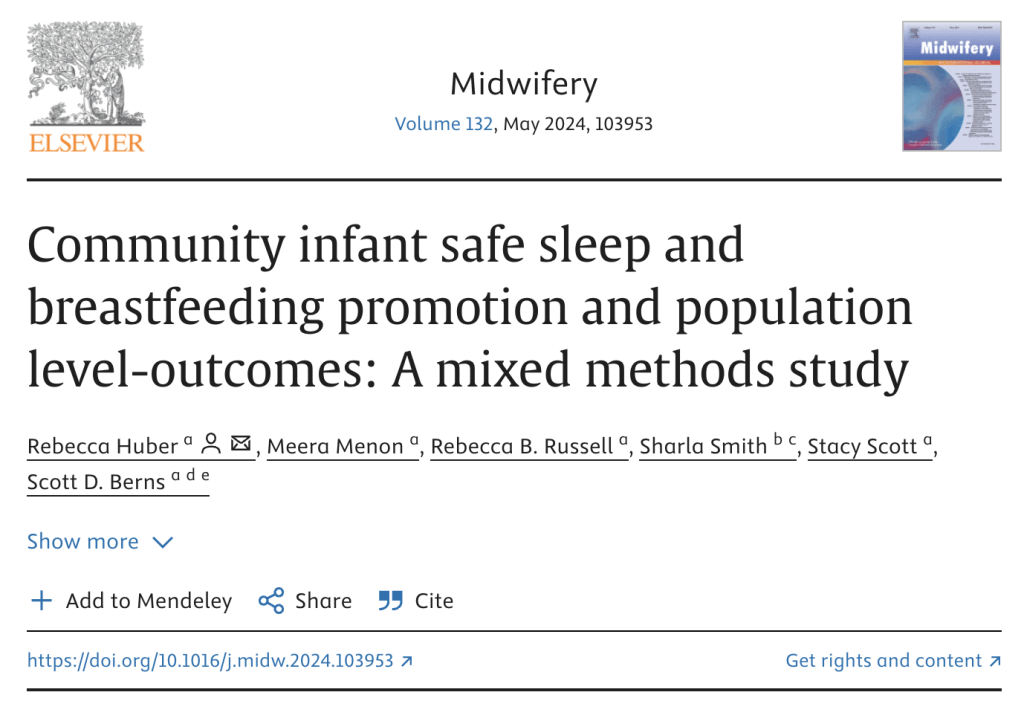Community infant safe sleep and breastfeeding promotion and population level-outcomes: A mixed methods study
Midwifery
Abstract
Problem
In the U.S., sudden unexpected infant deaths due to accidental suffocation and strangulation in bed are increasing. Though breastfeeding is a protective factor against sudden unexpected infant death, motivations to breastfeed often couple with unsafe infant sleep practices. Racial/ethnic disparities are present in sudden unexpected infant death, accidental suffocation and strangulation in bed, and breastfeeding.
Background
Promoting infant safe sleep and breastfeeding through community-level initiatives could address disparities in related outcomes.
Aim
Investigate the relationship between community-level strategies and associated state-level outcomes for infant safe sleep and breastfeeding.
Methods
We employed an intervention mixed methods framework and exploratory sequential design. The qualitative component entailed a hermeneutical phenomenological framework to analyze key informant interview data from seven U.S. community-level providers participating in a practice improvement initiative. The quantitative component entailed descriptively analyzing infant safe sleep and breastfeeding indicators from the 2019 Pregnancy Risk Assessment Monitoring System and Ohio Pregnancy Assessment Survey. Qualitative and quantitative data were linked through embedded integration.
Findings
We identified two mixed insights: gaps in promotion and outcomes, and persistent disparities between infant safe sleep and breastfeeding promotion and outcomes.
Discussion
Our findings indicate conversational approaches could improve infant safe sleep and breastfeeding promotion, outcomes, and relative disparities. We find that community collaboration is needed to address organizational capacity limitations in promoting infant safe sleep and breastfeeding.
Conclusion
Community-level organizations and providers should consider tailoring program offerings and care delivery to include conversational approaches and community collaboration to promote infant safe sleep and breastfeeding and decrease relative disparities in outcomes.
